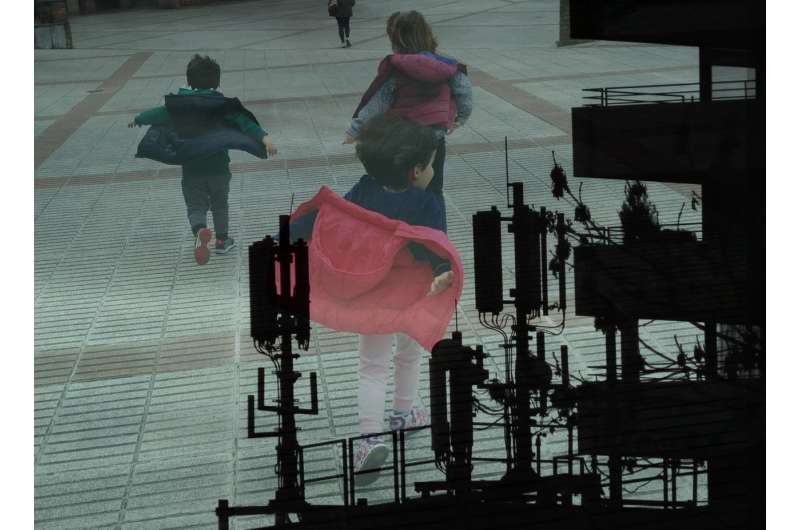Comparing two methods for measuring children's exposure to radio frequencies

A study has quantified emissions coming from radio frequency sources, and by means of personal and spot measurements has analysed which levels of exposure children experience. The international journal Environment International has just published the results of this work conducted by a research group at the UPV/EHU-University of the Basque Country and the Biodonostia Institute, in collaboration with international organisations.
The use of radio frequency sources is very widespread, including in mobile phones, Wi-Fi, Bluetooth, phone antennas, radio and TV. Researchers want to know whether these emissions fall within the recommended levels. However, children's exposure is understudied, and among experts on the subject, there are opposing views about the effect these sources could have on children. "The levels to which children are exposed need to be properly analysed to be able to conduct epidemiological studies, and for this, it is essential to optimize the methodology," said Mara Gallastegi-Bilbao, author of the Ph.D. thesis at UPV/EHU. She is currently working at the Biodonostia Institute.
This work had three goals: First, by means of spot and personal measurements, to study the exposure of eight-year-old children to radio frequencies; second, to identify the locations and sources that have the greatest repercussions on the overall calculation of exposure; and finally, to examine whether the assessments obtained through spot measurements could replace personal measurements. To compare the two methodologies, personal and spot measurements were made during the course of the work.
Gallestegi said, "In recent years, personal measurements have been on the increase. Measurements of this type offer personal information, since the people participating carry an exposure measuring device around with them. Such measurements constitute a major effort in terms of money and time. There are certain disadvantages, because simply carrying the device around does not allow the measurements to be made properly. Exposure is reduced because of the shielding effect of the body itself, so the values obtained are not totally reliable. The behaviour of the participants varies, because they are somehow aware that they are being analysed," said the researcher.
The research team conducted personal measurements among a small sample of 50 children over a three-day period. "The spot measurements, by contrast, were conducted in environments in which children spend much of their daily lives—in other words, at home, in schools and parks. Bearing in mind the level of exposure in these locations and the time spent in them, the TWA (time-weighted average) values were calculated," said Gallestegi. Weighted averages apply a different weight to the values. "A study was made of 104 children through a measuring device that provides an analysis of each source separately. Measurements of this type do not call for so much effort in terms of time, and are not affected by the shielding effect," she added. "It is the first time that the two methodologies have been compared. In other words, besides carrying out spot measurements in the locations where children spend most of their time, a set of personal measurements was also made on a smaller sample.
"Despite the fact that the absolute values obtained by one methodology and the other do not coincide, no differences were observed when it comes to classifying the child population into one level or another in terms of exposure to sources of radio frequency," said Gallastegi. "For the epidemiological studies, we were not that interested in knowing the exact value of the exposure, but in knowing whether children are exposed to low, moderate or high levels, since inadequate classifications could lead to incorrect interpretations. Therefore, the measurements of the exposure based on spot measurements could be useful and appropriate for classifying children into low, moderate or high levels of exposure, as long as they are studied in environments in which they spend most of their daily lives, and bearing in mind that the child population studied do not yet use mobile phones on a regular basis."
More information: Mara Gallastegi et al, Children's exposure assessment of radiofrequency fields: Comparison between spot and personal measurements, Environment International (2018). DOI: 10.1016/j.envint.2018.05.028



















